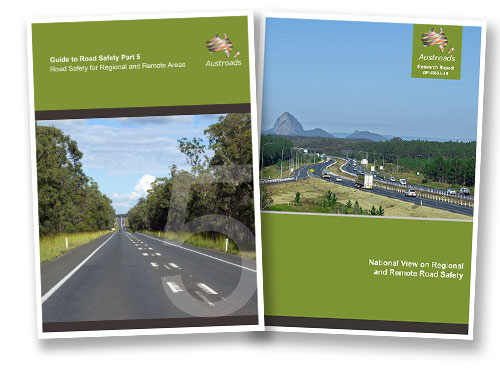Friday, 6 September 2019

Austroads has released an updated edition of Guide to Road Safety Part 5: Road Safety for Regional and Remote Areas.
Vehicle users in regional and remote areas of Australia and New Zealand have a higher risk of dying or being seriously injured in road crashes than those in major cities. In 2016, 65% of all road fatalities in Australia and 78% in New Zealand were in regional and remote areas.
The new edition of the Guide analyses crash data from Australia and New Zealand to understand issues and trends, reviews national and international literature, identifies people who are most at risk of being involved in crashes, and identifies measures and initiatives to reduce harm.
Countermeasures are evidence-based and incorporate the four pillars of Safe System: safe people, safe speeds, safe roads and safe vehicles.
Recommended road treatments included continuous roadside and central barriers, wide centrelines, divided roads and speed reduction techniques. An accompanying report, National View on Regional and Remote Road Safety, contains detailed results of the research.
“We found many single vehicle and head-on crashes in remote and regional areas. Crashes mainly involved drivers who were drunk, had taken drugs, were unlicensed or were fatigued, and vehicle occupants not wearing seat belts,” said Dr Lisa Wundersitz, Senior Research Fellow, Centre for Automotive Safety Research - University of Adelaide, and report author.
“We also found an increased risk of crashes when higher speed limits were not supported by the quality of the road or existing infrastructure.
“Emerging vehicle technology could offer the most potential for reducing crashes in regional and remote areas. Newer, safer vehicles have features such as electronic stability control, adaptive cruise control and advanced seat belt reminder systems that can mitigate crashes and offer more protection for their occupants.”
“Alternative transport options to driving one’s own vehicle, such as the Remote Bus Program in the Northern Territory, are often not available in remote and regional areas but should be encouraged, as should community-led collaborative programs that, for example, improve remote communities’ access to licensing or assist with fitting child restraints,” Lisa said.
Guide link: Guide to Road Safety Part 5: Road Safety for Regional and Remote Areas
Report link: National View on Regional and Remote Road Safety
No charge but registration essential. Can't make the live session? Register and we'll send you a link to the recording. Register now!
